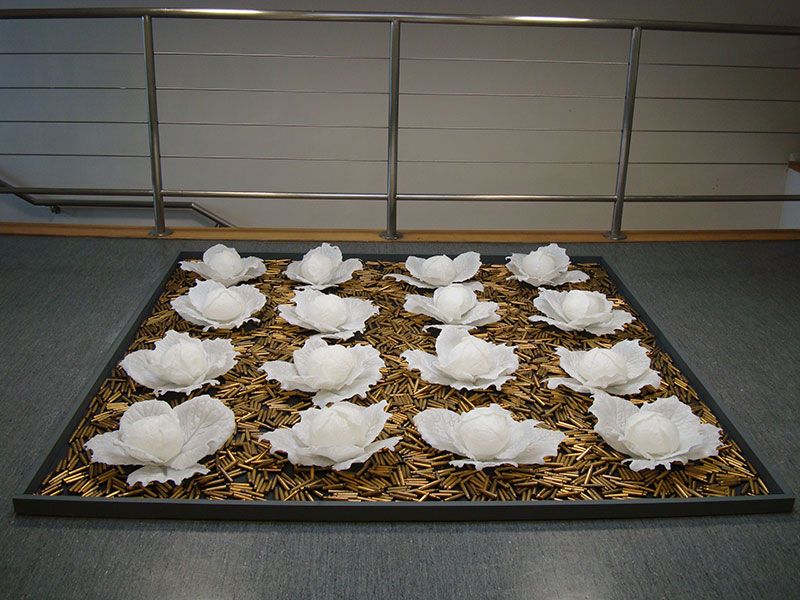‘Sculpture for me is the giving of a material gift to the being who makes (her) presence felt in my work.’
Doris Salcedo – Colombian artist

Diana Forster has been using art to tell the story of her mother’s forced displacement from Poland during the Second World War since 2011. She is motivated in part by the need to re-present the horrific events of war to each new generation, as a warning about what can happen in a society when hate of ‘the other’ gets the upper hand. She tries to find fresh approaches by avoiding disturbing images that can turn people away and can cause a secondary traumatization in viewers. She focuses instead on making work that engages the viewer with beautiful formal qualities and holds his or her attention while the installation is gradually understood. Forster’s work consciously narrates the everyday experiences of ordinary people impacted by conflict. Take, for example, her piece Cabbage Patch:

This work of art was made in response to a story that Forster’s mother Anna told her about life in the labour camp at Kopytovo. While the inmates starved, the guards grew cabbages and other vegetables which the detainees were not allowed to eat. Children like Anna would crawl on their hands and knees under the fencing at night to nibble the cabbage leaves. The guards assumed it was just animal damage, so no one was punished.
This simple, poignant story captures a world of cruelty, deprivation, resilience and survival. And Forster has brought it to life with a stunning installation. The beauty of the cabbages is what strikes most viewers first: gleaming white, textured, frilly around the edges – thanks to the teeth marks (Forster nibbled real cabbage leaves to achieve this effect). However, the spent brass cartridge cases that sit underneath, where ordinary soil should be, jar with the cabbages’ delicate charm, prompting closer inspection – and so the meaning of the piece starts to unfold. For Forster, this is one of the strengths of art as a form of storytelling: the way in which it allows viewers to approach at their own speed and gradually uncover layers of meaning. Through two everyday objects and contrasting colours, Forster evokes an episode in her mother’s long journey of migration which humanises hunger and helps us to visualise one of the many ways in which forced displacement is experienced and dealt with by ordinary families.